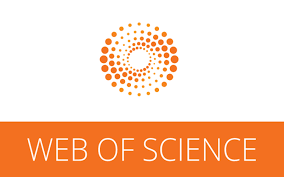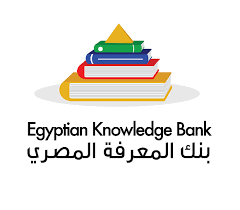Guide for authors,
AUTHORS GUIDELINES:
Authors are kindly requested to submit their manuscript to [email protected]Manuscripts must be made according to Template/Format of related journal.
IJCISS follow a Double Blind Peer Review System and Publish Monthly and Quarterly Refereed Journals. In order to bring in a high-quality intellectual platform for researchers across the world thereby bringing in total transparency in its journal review system.
Manuscripts are accepted for publication on the clear understanding that:
- They have neither been published nor been sent for publication elsewhere. All the authors should sign a certificate to this effect in respect of each article sent for publication. Names, qualifications, full addresses and Email ID of all authors must be provided while submitting the manuscripts.
- We are currently focusing on publishing original research works, review papers, short communications only, authors may submit the articles as per template of related Journal only to email:[email protected]. Authors are advised to submit the articles only with the copyright form duly signed, scanned and attached; authors may download the copyright form and Paper Template with our website.
- All authors are jointly and severally responsible to the various authorities for the contents of the manuscripts. The Editorial Committee/Publisher shall not be held responsible in any manner whatsoever to the contents of the manuscript and the views and interpretations expressed by the authors in the manuscripts.
- The decision of the Editor is final in all matters pertaining to the publication of the manuscripts. Editor has the right to do editorial revision of the accepted manuscripts, restriction of number of pages, tables and figures. No reason shall be given for the non-acceptance of the manuscript. Manuscript once received will not be returned to the author under any circumstances. The copy right shall rest with the Journal and no part of any manuscript shall be reproduced without specific permission of the Editor.
- Each manuscript received will be allotted a Paper ID no. as IJCISS... The authors include ID number of the paper in the subject area in all future emails while sending the revised version of the manuscript based on the comments of the referee.
- File Type: Authors should submit the articles only in MS-word format, no other format is accepted. If equations were used it should be converted by using MS Office equation editor and pasted as image at proper place. All equations should be grouped or may be prepared using equation editor software.
- File Size: No article should exceed more than 15 pages unless necessary, authors will be requested to substantiate the need if it exceeds the maximum number of pages. The file size of the MS word format may not exceed 10 MB size for submission through submission form and 15 MB if it is submitted as attachment over mail.
- Publication Cost: In an open access model, the publication costs of an article are paid from an author's research budget, or by their supporting institution, in the form of Article Processing Charges. These Article Processing Charges replace subscription charges and allow publishers to make the full-text of every published article freely available to all interested readers. In addition, authors who publish in our open access journals retain the copyright of their work, which is released under a "Creative Commons Attribution License," enabling the unrestricted use, distribution, and reproduction of an article in any medium, provided that the original work is properly cited.
NOTE: Authors note that paper cannot be withdrawn at any condition once it is accepted. The Team of IJCISS advise you, do not submit same article to the multiple journals simultaneously. This may create a problem for you. Please wait for review report which will take maximum 5 to 7 days.
TEMPLATE/FORMAT
The following is the template for research proposed for publication in the journal and which authors should follow:
- The journal follows the pattern of the APA 6th edition (American Psychological Association) in documenting references
- The title should be the fewest possible words that accurately describe the content of the paper(Center, Bold, 14 pt)
- Author's name and all titles (Bold, 12 pt)and the text (normal 12pt), Notes (normal 10pt)
- Author (s) name (Center)
Occupation
Affiliation
Email:
- Abstract: Each manuscript must include at most a 250 word abstract. Followed by Keywords: 5 to 10 Idioms.
- Introduction
- The main text format consists of a one column on A4 paper (quarto). The margin text from the left 3 cm, top are 2.5 cm, right and bottom are 2,5 cm. The manuscript is written in Microsoft Word, single space, Time New Roman 12 pt and maximum 15 pages, which can be downloaded at the website.
- A title of article: should be the fewest possible words that accurately describe the content of the paper. Indexing and abstracting services depend on the accuracy of the title, extracting from it keywords useful in cross-referencing and computer searching. An improperly titled paper may never reach the audience for which it was intended, so be specific.
- The Introduction should provide a clear background, a clear statement of the problem, the relevant literature on the subject, the proposed approach or solution, and the new value of research which it is innovation. It should be understandable to colleagues from a broad range of scientific disciplines.Organization and citation of the bibliography are made in APA style in sign [1], [2] and so on. The terms in foreign languages are written italic (italic).
- The text should be divided into sections, each witha separate heading and numberedconsecutively. Thesection/subsection headings should be typed on a separateline, e.g., 1.
- Introduction: Authors are suggested to present their articles in the section structure: Introduction - the comprehensive theoretical basis and/or the Proposed Method/Algorithm - Research Method - Results and Discussion – Conclusion.
- Literature review that has been done author used in the chapter "Introduction" to explain the difference of the manuscript with other papers, that it is innovative, it are used in the chapter "Research Method" to describe the step of research and used in the chapter"Results and Discussion" to support the analysis of the results. If the manuscript was written really have high originality, which proposed a new method or algorithm, the additional chapter after the "Introduction" chapter and before the "Research Method" chapter can be added to explain briefly the theory and/or the proposed method/algorithm.
- Research Method: Explaining research model, theory, technique of collecting the data, technique of analyzing the data, hypothesis.research chronological, including research design, research procedure (in the form of algorithms, Pseudocode or other), how to test and data acquisition [1]-[3]. The description of the course of research should be supported references, so the explanation can be accepted scientifically.
- Tables and Figures: are presented centerand cited in the manuscript.
- Analysis: In this section, it is explained the results of research and at the same time is given the comprehensive discussion. Results can be presented in figures, graphs, tables and others that make the reader understand easily. The discussion can be made in several sub-chapters.
- Conclusion: Provide a statement that what is expected, as stated in the "Introduction" chapter can ultimately result in "Results and Discussion" chapter, so there is compatibility. Moreover, it can also be added the prospect of the development of research results and application prospects of further studies into the next (based on result and discussion).
- References: The main references are international journals and proceedings. All references should be to the most pertinent and up-to-date sources. References are written in APA style of Roman scripts.







